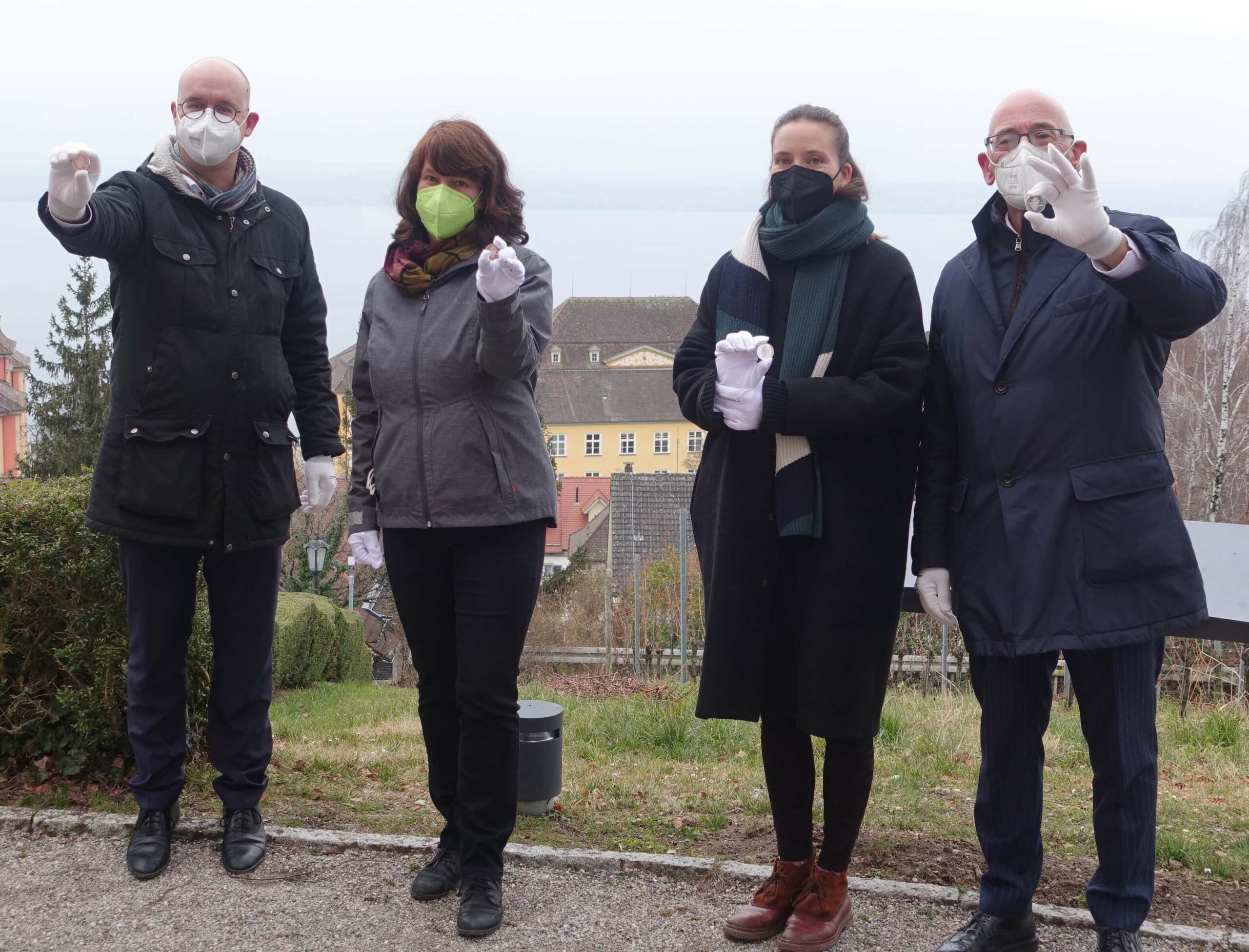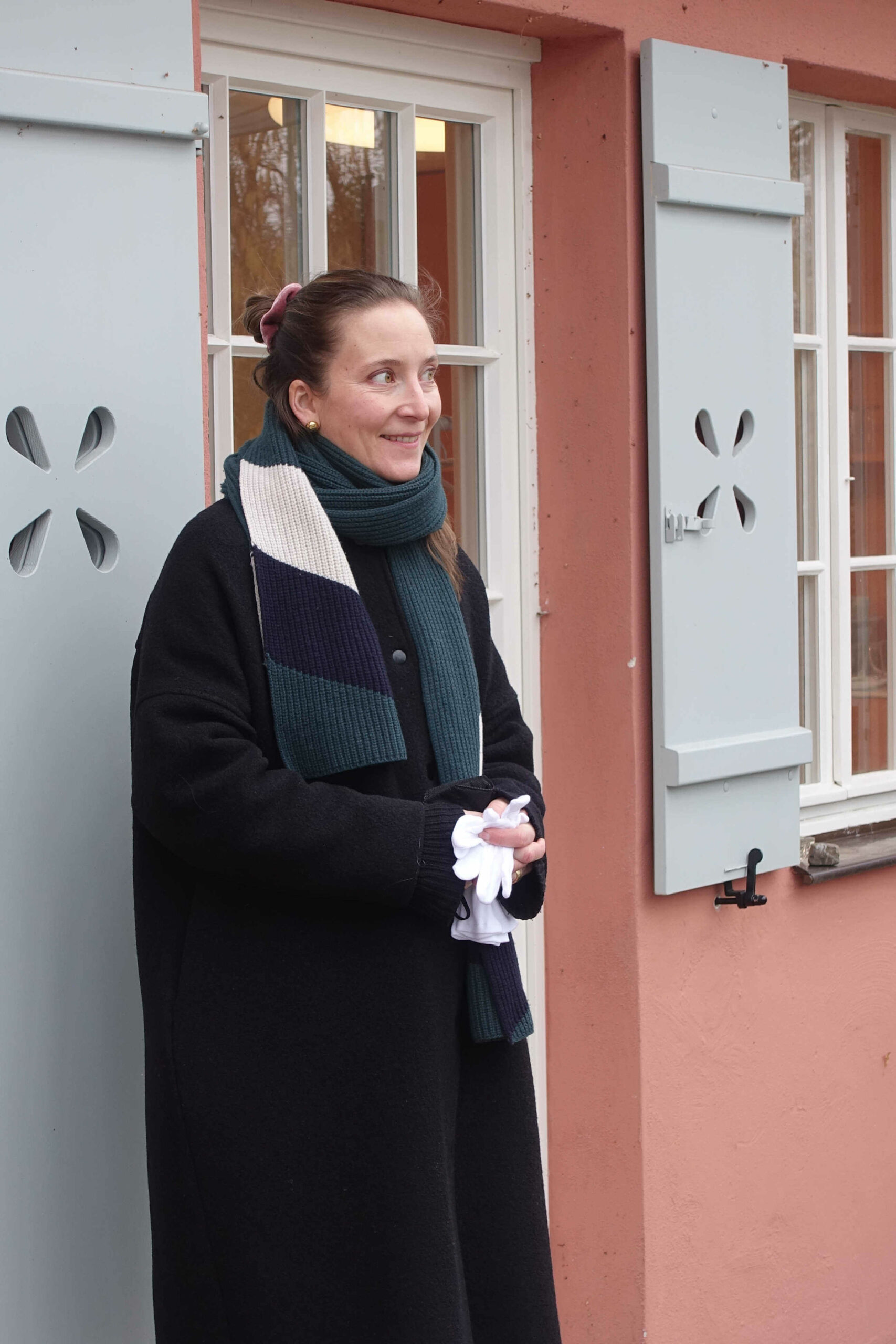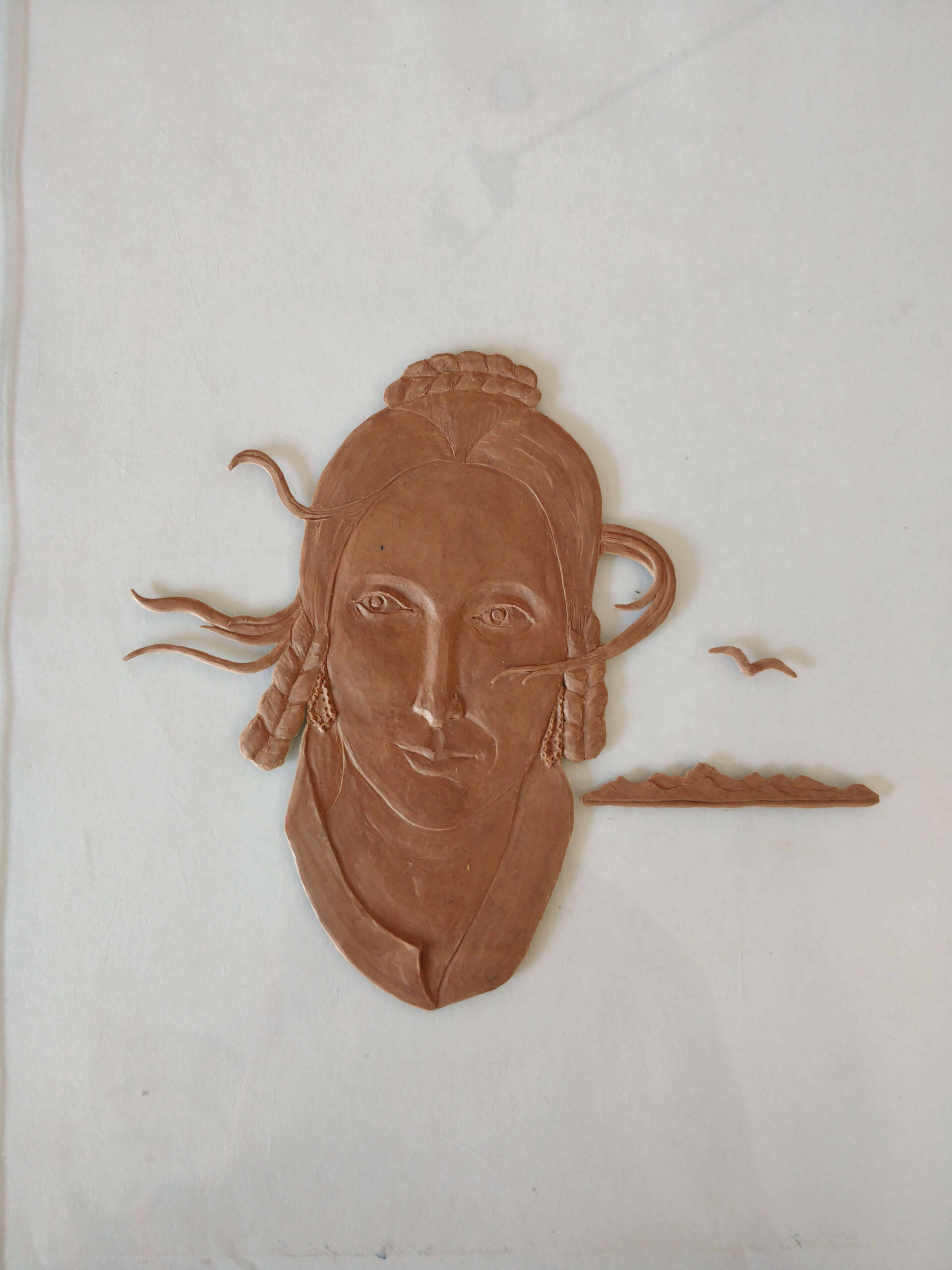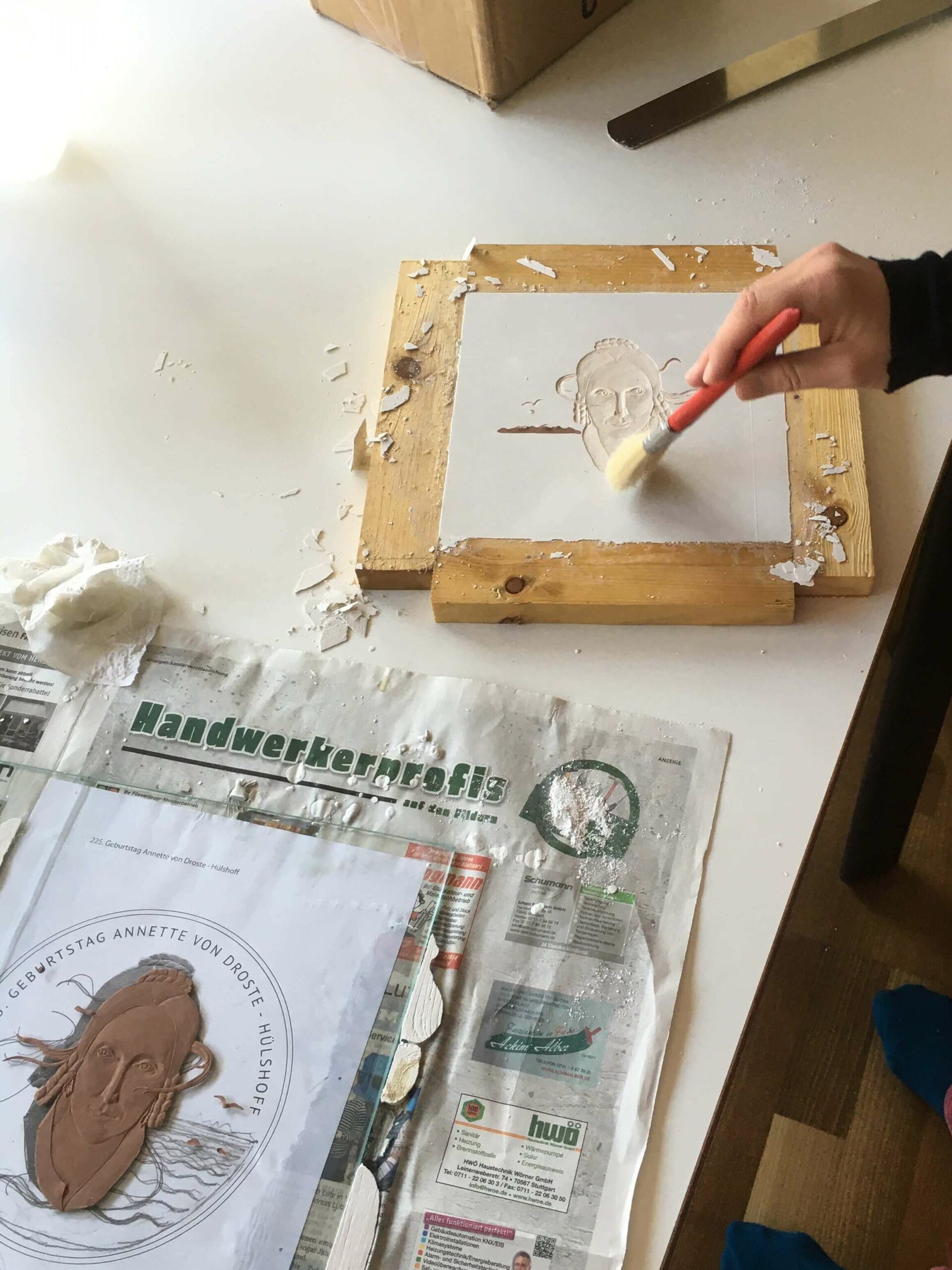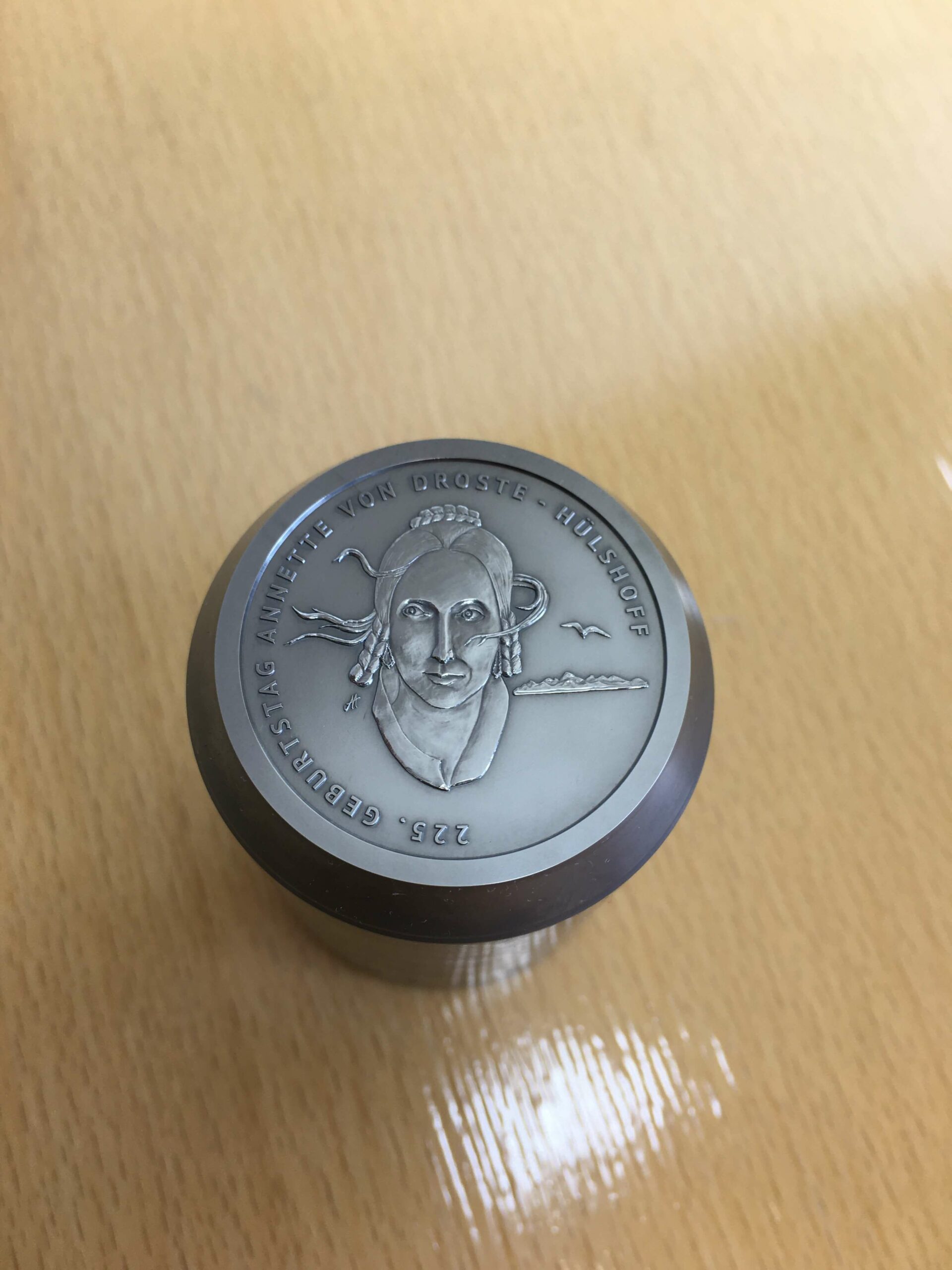Annette von Droste-Hülshoff is one of those wonderful figures who are appreciated by modern feminists and advocates of the classical idea of education alike. To this day, her work “The Jew’s Beech” is compulsory reading at German schools. Her poems portray her as an oppressed woman struggling to express herself in a male-dominated world. This makes the poet a suitable motif for German money, which is intended to represent and shape the national identity. In fact, she is such a perfect motif that she was already featured on the 20 DM banknote and that even an unusual anniversary like her 225th birthday is now readily used to honour her: on 24 February 2022, the German government will issue a 20 euro silver coin – in proof and uncirculated. Whereas the proof version can only be purchased from “Münze Deutschland” and numismatic dealers, the uncirculated coins can be acquired at the Bundesbank and local banks.
Annette von Droste-Hülshoff
But let’s start with a few facts about “the Droste”, as people like to call her. She was born in 1797 near Münster and came from one of the oldest noble families of Westphalia. The second eldest of four children, she certainly didn’t experience poverty – on the contrary. She was part of the elite and therefore enjoyed an excellent education. The level of her education can be illustrated by the fact that her tutor later became a professor at the oldest grammar school in North Rhine-Westphalia: the renowned Paulinum in Münster.
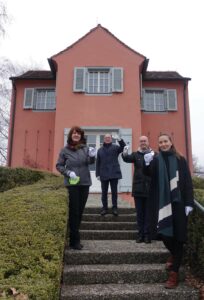
However, Annette did not match the ideal image of a Biedermeier beauty. With a height of 1.50m, she was too short, a bit sickly, much too cheeky and more intelligent than people considered appropriate at the time. Briefly said: no suitable marriage candidate presented himself. Thus, Annette stayed with her mother near Münster or travelled to Meersburg, where her sister had moved after her wedding. Droste resided there luxuriously at Meersburg Castle high above Lake Constance. She lived in a separate apartment that included a tower. From there, she is said to have enjoyed the view over Lake Constance. The poet died there in 1848 at the age of 51; she was buried in the Meersburg cemetery.
Why Was Droste’s Commemorative Coin Minted in Karlsruhe?
The Federal Ministry of Finance, which is ultimately responsible for organising the production of German coins, makes a point of having its commemorative coins produced by the mint that has the closest geographical connection to a certain topic. Since Meersburg is part of Baden, the Karlsruhe mint was chosen, although it had originally been planned to produce the coins in Stuttgart. Therefore, a small change was made regarding the design: whereas the press release of the Federal Office of Administration still shows the mint mark F (for Stuttgart) on the side with the eagle, the final design features a G (for Karlsruhe).
A Coin Presentation Event in Times of Covid
The place where the new commemorative coin was presented to the press matched the occasion perfectly: the Prince’s Little House in Meersburg, which had once been built by Jakob Fugger, the later Prince-Bishop of Constance, around 1600, was the property of Droste. She bought the building and the attached vineyard for 400 talers. She had earned that money with her poetry. This doesn’t go to say that she didn’t have other sources of income. She lived on an allowance paid by her brother. Nevertheless, purchasing the Little House with money she made herself was a symbol of her independence. Although Annette von Droste-Hülshoff only worked in the “Swallow’s Nest” for a few years, numerous memorabilia bear witness to her presence today: the selection ranges from a child’s chair to homemade silhouettes and a lock of Droste’s hair. That’s quite fitting as her curls play a key role on the new commemorative coin, which was presented in front of the Prince’s Little House on 24 January 2022.
The State Mints of Baden-Württemberg already mentioned in the invitation that one should wear warm clothes on the occasion. The planned big event had to be cancelled due to current Covid restrictions. Instead, a press conference was held, which was also attended by CoinsWeekly. To prevent any risk of infection, the event took place on the terrace.
Thus, there was no PowerPoint but short speeches that highlighted different aspects of the coins. The introductory speech was given by Gisela Splett, the State Secretary of the Ministry of Finance of the State of Baden-Württemberg, who visibly enjoyed the unusual occasion. Michael Hörrmann, the Managing Director of the State Castles and Gardens of Baden-Württemberg, honoured Annette von Droste-Hülshoff and her life in Meersburg. He pointed out that she was freedom-loving and quoted an important poem that is taken up by the design of the commemorative coin, and from which we would like to cite a few verses in translation:
On The Tower
I’m stood on a balcony high up the tower, / Surrounded by shrieking starlings, / And like a mænad, letting the blast dishevel / My streaming, untidy hair …
Oh, I’d like to be aboard a fighting ship, / Take hold of the steering rudder, / And across the surging reef / Streak whizzing like a seagull. …
Were I a hunter on open plain, / Or only a bit of soldier, / Were I at least just a man, / Then would Heaven advise me; / Now I must sit here so graceful and proper / The same as a well behaved child, / And may loosen my hair but in secret, / And in the wind let it flutter!

The Fluttering Curl on the Commemorative Coin
Anna Auras explained that this poem played a major role in her creative process. She recounted that, being born in the area of Lake Constance, she had of course been familiar with Annette von Droste-Hülshoff from an early age; nevertheless, she first started a detailed research process before attempting to capture the poet’s spirit in a portrait. She was fascinated by the contradiction: On the one side, she explained, Annette had been very privileged, and it was thanks to her privilege that she received the necessary education to write works of such high quality. On the other side, Auras continued, she had been held captive by the conventions of her social class.
Anna Auras captured this contradiction in her portrait. It is not based on the well-known youth portrait of the poet, which was depicted on the 20 DM banknote, but on a work by the painter Johann Joseph Sprick. The very conventional painting depicts Droste as a member of the old nobility, in the upper left corner the coat of arms, her long hair carefully tamed by means of a severe hairstyle, and not a single curl dares to escape.
It was Anna Auras’s idea to slightly dissolve this hairstyle on the coin in order to create a Droste who sees hope for freedom in the future, as is expressed in her poem “On The Tower”. A seagull and the shore also refer to her verses. In the field on the left you can see the artist’s signature.
An Elaborate Production
Benjamin Hechler, Numismatic Director of the State Mints of Baden-Württemberg, described how elaborate the production process of the coin was. For illustration purposes, he brought some originals, which passed from hand to hand under his watchful eye. After all, the Numismatic Director was personally responsible for returning these coins to the mint. In order to be able to present them on this occasion, Benjamin Hechler needed a special permission from the Federal Ministry of Finance! The coins aren’t allowed to leave the vaults of the mint and the Bundesbank until the official date of issue.
Benjamin Hechler told that the clearly defined nose of Droste-Hülshoff presented some major problems when it came to the minting process. To create the distinctive shape, two minting steps with almost 100 tons of pressure are necessary. Each of the 678,000 coins of the “normal” uncirculated version is produced with great effort. To avoid die errors, the dies are reworked after 700 to 1,000 coins. Regarding the proof version, this is even done after 50 coins.
Creating the “Annette von Droste-Hülshoff” Commemorative Coin
A lot of love and effort went into this new German commemorative coin. To illustrate this, Anna Auras and Benjamin Hechler provided us with pictures that show the individual steps of the process.
Annette von Droste-Hülshoff hoped that posterity would pay her tribute. Therefore, she would have been delighted about this commemorative coin, all the more so because – as we know from her letters – she was an avid coin collector herself.
For more information about Annette von Droste-Hülshoff visit the Droste-Portal.
Here you can listen to the original German version of the poem “On The Tower” or rather “Am Turme”.
Here you can find interesting information about Anna Auras.
The artist Anna Auras also creates elegant contemporary jewellery.
This website gives information on the Prince’s Little House.
And here you can learn more about the State Mints of Baden-Württemberg.
This article about the frivolous Vreneli shows that curls certainly do play a role in numismatics.
And if you are interested in all coins of the Federal Republic of Germany, you can find a comprehensive catalogue of circulation and commemorative coins including mintage figures at Cosmos of Collectibles.




